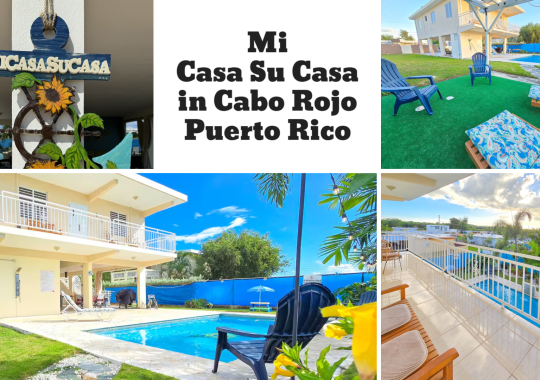|
Getting your Trinity Audio player ready...
|
With its clear waters, rich culture, and many islands, the Caribbean is perfect for those looking for both fun and relaxation. On a sailing trip here, you can find hidden spots, experience local life, and enjoy the peace of the sea. The Caribbean is great for sailors of all levels.
Each island has something special, from the lively markets in St. Lucia to the quiet beaches in the Bahamas. There is fishing, island hopping, and birdwatching that can all be enjoyed from the deck of a boat. In this article, we will go over what you need to know about taking a sailing trip around the Caribbean.

Choose the right time to sail
Choosing the right time to sail in the Caribbean is very important for a smooth and enjoyable trip. The best time to sail is from December to April, when the weather is nicest. During these months, it’s the dry season, with mild temperatures and steady trade winds that are perfect for yachts.
You also need to think about the weather. Hurricane season is from June to November, and storms can make sailing difficult and dangerous. Planning your trip outside of this season will give you safer and more pleasant sailing.
Planning your trip to match up with popular events and festivals can make your journey even more fun. Events like Antigua Sailing Week in April or the St. Lucia Jazz Festival in May offer exciting cultural experiences. These festivals add extra enjoyment to your sailing adventure, making it even more memorable.
Choose a route
There are several popular sailing areas in the Caribbean. The Eastern Caribbean route is a favorite, running from the Virgin Islands to Grenada. This route includes stops like St. Martin, Antigua, and St. Lucia. Another popular route is through the Bahamas, with its shallow waters and many small islands. The Western Caribbean route includes places like Cuba, Jamaica, and the Cayman Islands.
The Bahamas are famous for their beautiful beaches and clear waters. You can explore the Exumas, known for their quiet spots and great snorkeling. The Virgin Islands, split between the US and British territories, are known for easy sailing with short distances between islands and many sheltered bays. Highlights include the Baths on Virgin Gorda and the nightlife on Jost Van Dyke.
A good Caribbean sailing trip mixes visits to remote islands with stops at well-known ports. Remote islands provide peace and natural beauty, perfect for snorkeling, diving, and relaxing on quiet beaches. But, these spots might lack some services, so you need to be well-prepared.
Well-known ports offer access to supplies, repairs, and social activities. They have lively markets, restaurants, and nightlife, giving you a taste of local life. Mixing both types of destinations ensures you enjoy both the tranquility of hidden spots and the convenience and excitement of popular places.
Daily life aboard
Daily life on a sailboat mixes routine tasks with adventure. You have daily duties to keep the boat in good shape and safe. This includes checking the weather, planning your route, and doing regular maintenance on the yacht.
Cooking and eating on a sailboat is a special experience. The small kitchen, or galley, means you need to be creative with meals. Simple, easy-to-make dishes work best, and you can often get fresh seafood from local markets or catch it yourself. Eating on deck with the sea around you makes meals even more enjoyable.
Keeping the yacht clean and well-maintained is a daily task. This includes washing the deck, cleaning the interior, and checking the engine and other equipment. Regular maintenance keeps the yacht in good condition and avoids potential problems.
Being surrounded by water, swimming, snorkeling, and diving are common activities. You can also use equipment like kayaks, paddleboards, and fishing gear for added fun. Exploring the underwater world or just taking a refreshing swim are daily highlights.
Navigating the Caribbean
Navigating Caribbean waters can be tricky so using local maps and navigation tools is important. These maps show water depths, hazards, and landmarks, while navigation aids like buoys and beacons help you stay on safe routes and avoid dangers.
Currents can vary, so knowing their direction and strength helps you plan your route. Reefs are common and can be dangerous, so always check your maps and watch for reef markers to avoid hitting them. Tides change the water level, especially in shallow areas and near ports, so understanding tidal patterns keeps your yacht from getting stuck.
Safety
Safety is the most important part of any sailing trip, especially in the Caribbean. Always have a well-stocked emergency kit on board because you never know when an emergency can happen.
This should include life jackets for all passengers, flares, a first aid kit, a fire extinguisher, and a VHF radio. It’s also wise to have a GPS device and a satellite phone in case you need to call for help in areas without cell service. Make sure everyone on the yacht knows how to use this equipment.
Weather can change quickly in the Caribbean. Check the weather forecast before you set sail and keep an eye on the sky for sudden changes. If you see dark clouds, lightning, or feel strong winds, seek shelter in a safe harbor until the storm passes. Use weather apps or marine radios to get regular updates while you’re on the water.
Learn about the local hazards in the areas you’ll be sailing. Reefs, sandbars, and shallow waters can be dangerous if you’re not aware of them. Use updated maps and charts, and pay attention to navigation aids like buoys and beacons. Avoid sailing at night when it’s harder to see these hazards.
Communication is also important for safety on the water. Use a VHF radio to keep in touch with other boats and marinas. Let someone on land know your route and schedule, and check in with them regularly. If something goes wrong, they can alert the authorities and help coordinate a rescue.



